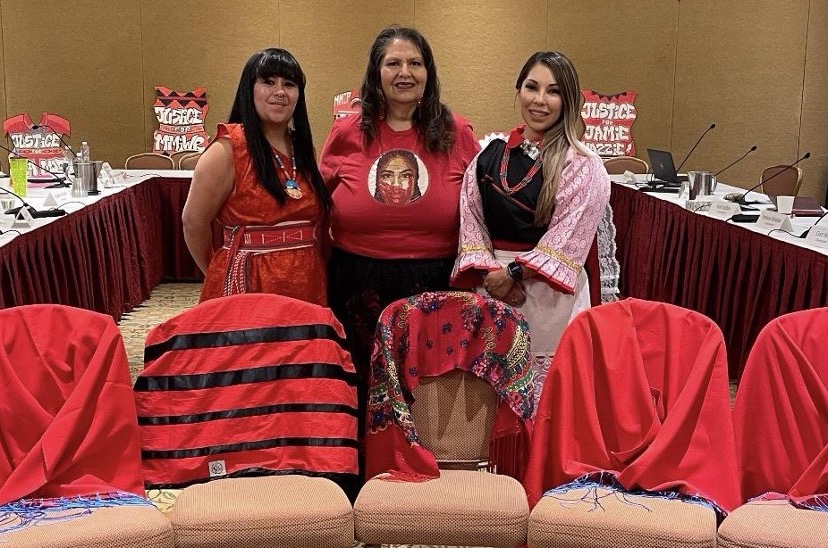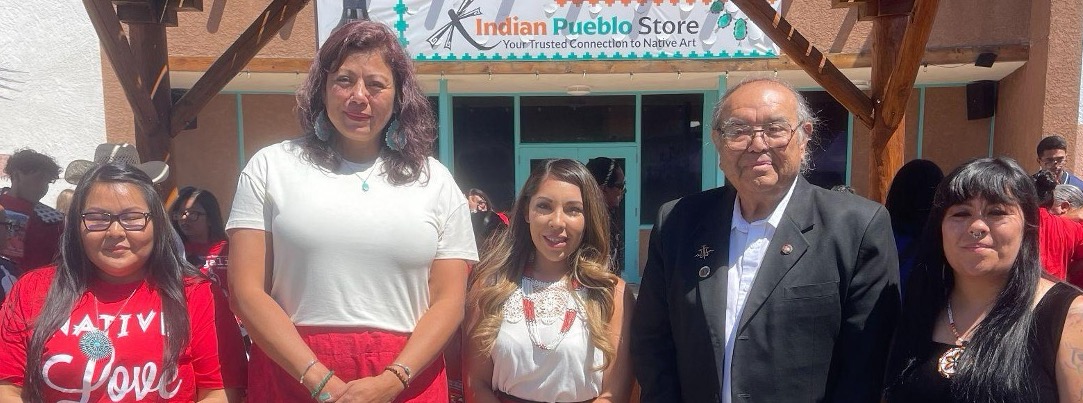The Coalition to Stop Violence Against Native Women Centering Impacted Families of MMWR
Empowering Voices to Demand Justice and Healing
Ma k'u wam, Sen gí tamū Greetings Everyone,
The crisis of missing and murdered Indigenous women (MMIW) is a deeply troubling and pervasive issue that demands urgent attention and action. Indigenous women and girls have been disproportionately affected by violence, facing alarmingly high rates of disappearance and homicide across Turtle Island, so-called the United States. This article aims to shed light on the important issue impacting so many of us. The Coalition to Stop Violence Against Native Women (CSVANW) recognizes the underlying causes and emphasizes addressing this crisis and seeking justice for the victims. Justice for a family member's loved one has been heavily on our minds. Together, we have been making much-needed efforts to support families impacted by the Missing and Murdered Indigenous Persons epidemic.
The Heart-wrenching Crisis
The extent of the crisis facing American Indian and Alaska Native (AI/AN) women is staggering. According to reports and studies, Indigenous women are significantly more likely to experience violence and go missing than any other demographic group. In the United States, the National Crime Information Center reported that, as of 2019, there were over 5,700 unresolved cases of missing Indigenous women. More than 650 persons have been reported as missing to law enforcement in New Mexico and the Navajo Nation as of April 2023. Sadly, some relatives sometimes don't get reported as missing and are marked as "runaways." Any person under 18 should not be considered a "runaway" because they rely on their life-givers or guardians for basic survival needs.

Root Causes and Contributing Factors
To understand the root causes of MMIWR, we must acknowledge the impacts of settler colonialism and nuclear colonialism that inflicts violence to this day through massacres and diseases, broken treaties, boarding schools, and land extraction. What happens to the land happens to us as Indigenous peoples. Root causes include the impacts of extermination, manipulation, and colonization of indigenous peoples. U.S. Federal policies are also to blame, such as the Removal Act of the 1830s and the Indian wars of 1870 to 1890 led by U.S. presidents. Religious persecution in the 1870s nearly destroyed Indigenous societies and spirituality. The Residential Boarding Schools era was another U.S. federal policy that led to countless Native children being forcibly removed from their families and sent to federal and Christian boarding schools. It was also when child sexual abuse can be traced back through generations. Land violence was and still is a tactic to eliminate Indigenous peoples to gain access to land and water. Man camps are prevalent in or near Indian country because of the extractive business industries that are taking place. They have been a concern since the 1978 Oliphant Supreme Court decision prevented Tribes from prosecuting non-Indians who raped or assaulted Indians on Tribal lands. While the Violence Against Women Act of 2013 and 2022 addressed this gap by returning criminal jurisdiction to Tribes over non-Indians who commit these acts, much work remains to prevent violence against Native women and strengthen Tribal capacities to respond.Since the oil boom, Native communities have reported increased rates of human trafficking, sex trafficking, and MMIW in their communities.

Addressing the Crisis
Addressing the crisis of MMIW requires funding for the impacted families and action from the U.S. federal government. Families need access to funds to search for their loved ones. These funds should cover the travel costs to search for a missing person, including lodging and gas. The funds would also cover the expense of MMIWR events such as MMIWR gatherings and awareness. I imagine a time and place for impacted families to access funds covering food and supplies to bring people to action so that their loved one is not forgotten. More funding is needed for Tribal programs, Tribal Coalitions, and Tribal Law Enforcement agencies to support the impacted communities. Congress can pass the Bridging Agency Data Gaps and Ensuring Safety (BADGES) for Native Communities Act, re-authorize the Family Violence Prevention and Services Act (FVPSA,) and increase non-competitive funding for Tribal programs providing services.
Empowering the Families
CSVANW supported 11 families who attended the Not Invisible Act (NIA) Commission hearing in Albuquerque, NM, by providing each family with $500-$1,000 Visa Giftcards from our donations to assist with lodging, meals, and travel costs to testify on behalf of their missing or murdered family member. CSVANW staff Tiffany Jiron and Celina Montoya Garcia, along with two of our members, Terrie Chavarria and Sadie, opened up the NIA commission hearings with a song sung in Tiwa and a powerful poem. Our Policy and Advocacy Director, Tiffany Jiron, attended a radio interview with KUNM a few days after the NIA Commission Hearings. Our Land and Body Violence Coordinator, Celina Montoya-Garcia, held a Press Conference at the Indian Pueblo Cultural Center in Albuquerque the day after the NIA Commission Hearings ended. It provided another opportunity to share more about their loved ones through local news media.
The CSVANW’s Training & Education hosted the first MMIWR Advocacy Training centered on healing and justice. A committee of community leaders created the training framework—Dr. Christina Castro, Three Sisters Collective, Chastity Sandoval, Advocate, David Adams, Parnall & Adams Law, Celina Montoya-Garcia, CSVANW, Jolene Holgate, CSVANW, Deiandra Reid, Advocate, Tara Trudell, Advocate, and Reyes DeVore, Pueblo Action Alliance. This committee met over six months to collectively develop the first MMIWR Advocacy training in New Mexico, creating a network of trusted MMIWR advocates who hold institutional and healing knowledge to inform better responses to the crisis. Utilizing a trauma-informed approach, we trained advocates on the dynamics of MMIWR, system gaps, and resource navigation to support families experiencing the crisis of MMIWR. On September 6 and 7, the training had over 25 people in attendance.
CSVANW centers the families impacted by violence, and we are honored to be trusted with their stories. This work is meaningful to us. We do this healing heart work with many of our personal experiences cornered in our minds. We are guided to do this work through our traditional knowledge and beliefs. We carry out this work with love for all of our Indigenous people. We are cyclebreakers rooted in love and kinship; and together, we do more.





